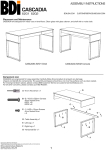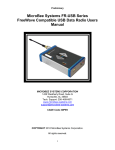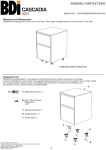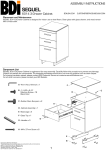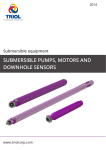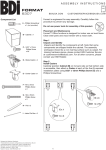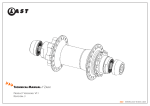Download August 2013
Transcript
PU SE Newsletter Inside AUGUST 2013 INSIGHT: INNOVATION AT WORK · 2 INTELLIGENT PULSER · 3 iTPM TIPS & TRICKS · 5 FOLLOW US Insight Of course, this new energy boom is no accident—it is the result of a group of pioneers who worked outside the conventional channels (fitting to refer to their finds as “unconventional”). I was saddened to hear this week that one of those pioneers, George Mitchell, has passed. from Gabe It was in the 1980s that Mitchell began his fracking experiment, and nearly two decades later that his efforts finally paid off by releasing vast quantities of natural gas in the Barnett Shale in North Texas. His vision and determination obviously paid-off, and his innovation is the most important one in energy so far this century, according to IHS Vice Chairman Daniel Yergin. Although I often report on the oil and gas industry via our social media outlets, I rarely get to experience the industry firsthand like my colleagues in business development who handle accounts all over the country. And because I commute to Cedar Park from Austin, Texas, what I see is a landscape mostly dotted with the high tech companies this area is best known for. I was thrilled then, when on my family vacation to South Texas, I was witness to so much of the activity that has resulted from the new shale oil boom. On our drive through Interstate 37 (yes, I kept track), I saw buildings for several of the major service companies, as well as a large drilling mud company, and many company trucks riding solo or in caravans. The surrounding land was also dotted with activity, with fields and wells becoming more prevalent as we entered the heart of the Eagle Ford. Oil has made a comeback, as illustrated in the graph, and it is impacting families all across this state. The oil and gas industry runs deep in my own family: my older brother builds infrastructure for drilling operations, my brother-in-law oversees properties that are in production, and my nephew does hotshotting and gauging. We clearly benefit from this upswing, as does the local economy, as we pay for our goods and services. Now thanks to new exploration and extraction methods, the US is uniquely positioned to become energy independent as early as 2020, according to several experts. This is an incredible leap: shale has gone from almost no production in 2005 to a significant portion of total US production in 2013. Clearly, it is innovation that got us here, and it is innovation that will bring us even more security and prosperity in the coming years. Gabe Treviño Communication Specialist CONTACT U S [email protected] 512.331.4241 Jeff Brown Account Manager (Houston Metro) [email protected] (O)512.222.1157 (C)512.774.9277 Jon Weatherly Account Manager (Remaining U.S.) [email protected] (O)512.220.1603 (C)512.865.0623 August 2013 │ TOLTEQ.com │ 2 iTPM Get reacquainted with our retrievable pulser The tool that put us on the map just keeps getting better. When the iTPM was introduced to the independent market, there was nothing quite like it. There still isn’t. Satisfied customers all over the world have put iTPM to the test, and continue to sing its praises. Here are a few reasons why they won’t ever go back to regular “Legacy” tools. Impeccably made. And performs like the well-tuned machine that it is. Constructed from high-grade materials like aluminum and beryllium copper, iTPM is designed and manufactured with an incomparable attention-to-detail. You can tell by looking at it. Inside, you won’t see potting or tape jobs that pass for protection, just a sleek and rugged case that keeps everything safe and working smoothly. Just as remarkable are the custom electronics that multi-task so well, driving the solenoid, communicating with the controller, and logging environmental data. With versatile Tolteq-designed boards, the true power of iTPM lies is in its amazing performance. Two popular configurations. But many more possibilities. iTPM can be easily configured into iPGM with the addition of our new intelligent gamma sensor, iGS. With the gamma so close to the bit, iPGM will provide immediate feedback as you enter the target zone. But why stop there? With Tolteq plug-n-play components, you can transform iTPM into the tool that is best suited to your unique needs. You can even plug-in a battery and make the stand-alone compact tool you have always envisioned, with reliable iTPM performance that will keep your data coming. Long battery life. With unprecedented efficiency, it will pay for itself over and over. Thanks to innovative optimizations in energy usage, iTPM not only does more, it does more for longer. Even with its reliable performance and vast logging capabilities, iTPM averages an industry leading 400+ operational hours on a single battery! As specialized lithium batteries continue to rise in price, iTPM allows you to focus on other expenses. No more bad connections Makes broken pins a distant memory. It has plagued the industry for years: broken connections caused by human error and bad design. Consider the problem solved. With a unique uphole keyed end (optional), iTPM will safely connect to the spring-loaded Tolteq SureMate™ centralizer every time. Just push the two ends together and rotate until you feel the connection, then tighten. It’s so easy, building a toolstring will never be the same. August 2013 │ TOLTEQ.com │ 3 LCM resistance and high-temperature reliability. A workhorse that will handle anything. With fewer moving parts and an innovative screen design, iTPM will dispense with the heaviest LCM applications. Even internal wear, known as “washing,” is minimized, thanks to abrasive-resistant ceramic parts. And with a 175°C tolerance, iTPM might be the toughest pulser you will ever send downhole. Extensive logging. Because you can never have enough data. Thanks to advanced electronics built right into iTPM, you now have an additional set of eyes for tracking environmental data, including shock and vibration. In addition, iTPM will also log its own power usage and flow/pulse states. Best of all, this valuable information is kept safe with a generous storage capacity that will not force the processor to write over older data. Effortless data analysis. Let Tool Tracker™ turn your data woes into wows. What are you going to do with all that great data iTPM just logged? You can manually plug it into a spreadsheet, or even better, view it in Tolteq’s groundbreaking Tool Tracker software. With this powerful application (sold separately), you can view your data however you choose: create impressive color-coded multi-variable graphs with one click. You don’t even have to remove the electronics, just plug-in the Tool Tracker cable to iTPM and start analyzing. Really fast maintenance There is more than beauty in simplicity. Because iTPM was designed for superior reliability, there are less parts to worry about. This makes maintenance and cleaning a snap. Plug iTPM into the Tolteq Fill Station and be amazed at how fast you can do a complete oil fill. Need guidance? The user manual features large color images for every step. Full maintenance in under an hour has just become a reality. iTPM comes with much more: Customer support from real experts. We understand that it is not enough to just make great products—we have to stand behind them. Every iTPM comes with support from a staff of knowledgeable people, starting with your account manager all the way to product support engineers who have spent time in the field. And reaching them isn’t hard either, just call Tolteq directly and we’ll connect you with the right person. August 2013 │ TOLTEQ.com │ 4 tips & tricks iTPM Maintenance The Tolteq iTPM was designed with a compensating piston system that has proven to be both reliable and tough; however, as with all downhole tools, maintenance plays a key role in ensuring the tool’s long-term functionality. As you prepare the downhole end for a new job, keep the following tips in mind. Tip 1 Avoid a seized orifice holder: Due to the harsh conditions experienced by the pulser, on rare occasions the orifice holder may become difficult to remove. To avoid this potential inconvenience, we recommend the following simple and effective step: wrap two layers of PTFE film, commonly known as “plumber’s tape,” around the orifice holder threads. Install the orifice holder as usual. Tip 3 Make fine adjustments to the stroke length: After setting the stroke length, attach the gauge to the pulser downhole end. Activate the pulser with your preferred method (we suggest SurePulse!). The gauge has two dials that will both move when the pulser sends a pulse. If the large dial reads greater than 0.10", the stroke length is too long. To adjust it, turn the orifice holder clockwise. If the gauge reads less than 0.10", the stroke length is too short. The orifice holder should be adjusted in a counterclockwise direction. Tip 2 Visually verify the stroke length: In order for the pulser to work properly, the orifice holder must be installed to where it just makes contact with the ceramic poppet tip, thus allowing the proper space for the shaft to retract properly (the 0.10” movement known as the stroke length). This is a task that requires some precision, and should be verified with a gauge. Nevertheless, this additional step provides an added safeguard: after attaching the orifice holder and setting the stroke length, look inside at the end of the orifice holder and verify that it sits flush with the inside lip (see below). If so, continue the procedure. Inside Lip Orifice Holder End iTPM Downhole End Tip 4 Replace o-rings after every job: Because the pulser system relies on the integrity of multiple o-rings for optimal operation, it is a good practice to replace all o-rings as part of your shop’s maintenance workflow. Especially important is the small quad seal o-ring that sits inside the compensating piston assembly (AS-108, P/N 100195) and the male rotary connector o-ring (AS-016, P/N 100210). The quad seal o-ring prevents drilling fluid from entering the oil-filled section of the pulser; the rotary connector o-ring prevents oil from invading the driver board.












